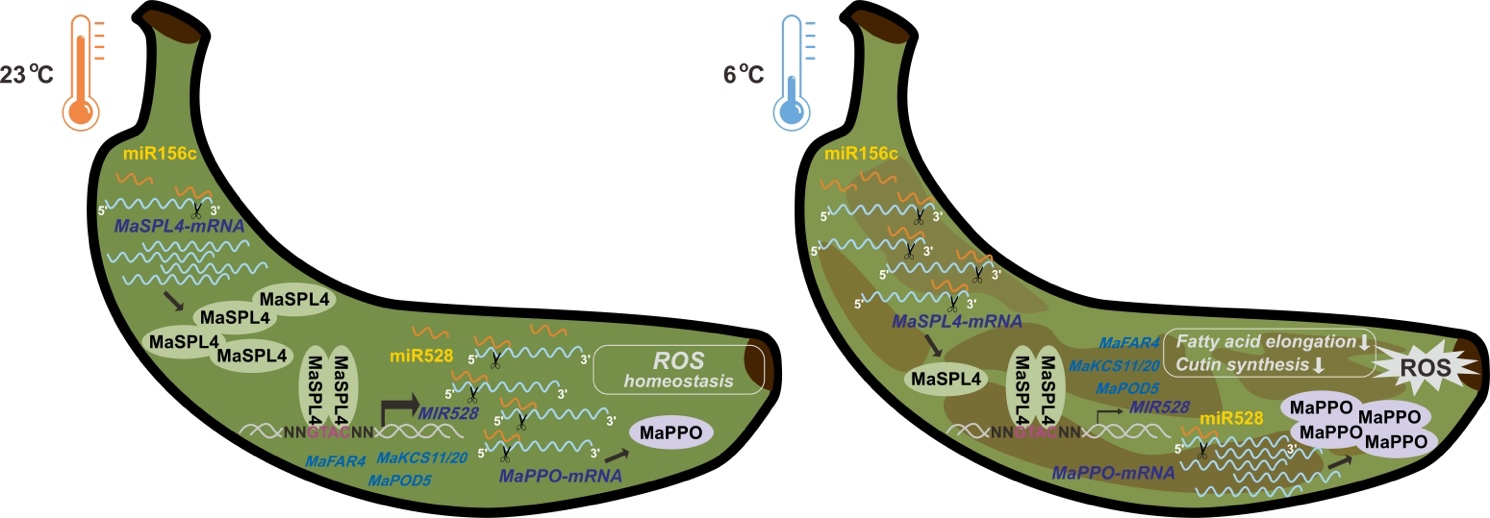New progress in the regulation of banana cold stress response mediated by microRNAs has been made by South China Botanical Garden, the Chinese Academy of Sciences
The prevention and control of chilling injury has always been a technical problem in the fruit preservation industry, and exploring the regulatory mechanism of chilling injury is a frontier scientific question in postharvest biology. Banana is the most produced and traded fruit in the world, and as a tropical crop, banana is very sensitive to low temperature, easy to suffer from chilling injury. The main symptoms are peel browning, pulp hardening and abnormal fruit ripening, resulting in huge economic losses. MicroRNA (miRNA) is a class of non-coding single-stranded small RNA with a length of 20-24 nucleotides that regulates post-transcriptional gene silencing and plays a key role in plant growth, development and response to stress. Last year, two American scientists won the Nobel Prize in Physiology or Medicine for their first discovery of miRNAs and their role in post-transcriptional gene regulation.
This previous studies found that miR528 triggered reactive oxygen species imbalance in banana peel and caused peel browning by regulating the expression of polyphenol oxidase genes under cold stress, while transient overexpression of miR528 in banana peel delayed the occurrence of chilling injury. Further studies showed that most MaSPL in banana genome was inhibited by coldness, among which MaSPL4/5/25/42/44 could bind to the promoter of MIR528 and activate its expression, and MaSPL4/5/42/44 was also the target gene of miR156c. Subsequently, the function of miR156c-MaSPL4 in banana cold stress response was clarified through instantaneous transformation combined with multiple experiments. Also, several MaSPL4 target genes associated with chilling phenotype were identified and primarily validated by DAP-seq and RNA-seq combined analysis. Based on this, a cascade working model involved in banana cold stress response was proposed, that is, under cold stress, miR156c in banana peel is significantly up-regulated, while its target gene MaSPL4 is significantly down-regulated, thereby inhibiting the accumulation of miR528 regulated by its transcription, and the target MaPPO of miR528 is significantly induced, thus triggering a large accumulation of reactive oxygen species. At the same time, MaSPL4 may also affect the structural stability of banana peel by interfering with the synthesis of long chain fatty acids and cutin, and ultimately lead to the chilling phenotype of banana peel. This study reveals a new cold stress response pathway independent of the classical CBF/DREB1 (C-repeat binding factor/dehydration responsive element binding 1) signaling pathway, which enriched the molecular mechanism of banana chilling injury. It also provides target molecules for breeding cold resistant banana varieties.
These findings have been recently published in Molecular Horticulture.The link of this article: https://doi.org/10.1186/s43897-024-00115-1

File Download: